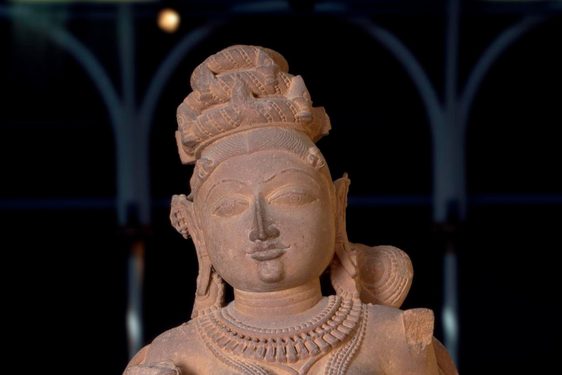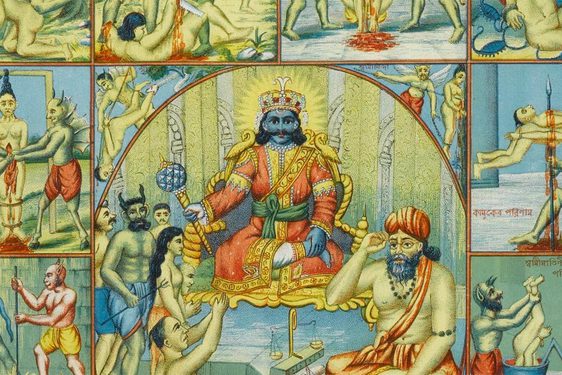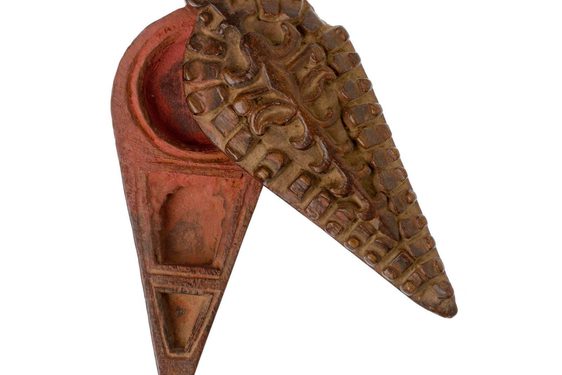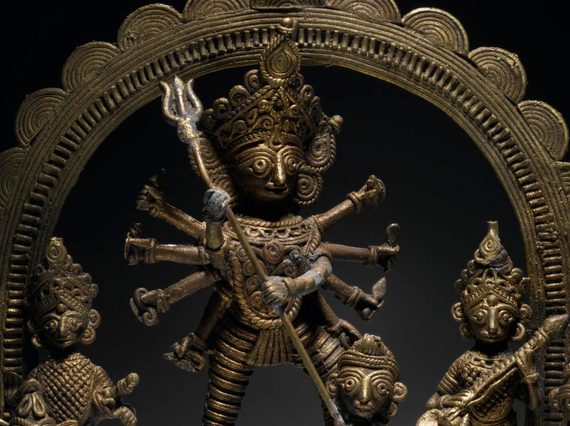
The Hindu Goddess Durga
News Story
Durga, goddess of Shakti - the divine positive feminine energy and focus of festival celebrations
This very elegant bronze figure of Devi (goddess) Durga is an attractive and prominent figure and a principal deity in Hinduism. In Sanskrit, Durga means the inaccessible or impassable. She is the other half of Shiva, one of the three principal deities of Hinduism, but also represents the combined form and powers of the three goddesses Lakshmi, Kali, and Sarasvati.
This figure symbolizes her divine force of positive, feminine energy known as shakti, which she uses against the negative forces of evil and wickedness. Here she is seen slaying Mahishasura (a buffalo demon), who had gained the advantage that no man could kill him. Nevertheless, Durga kills him with her trishul (trident), and hence becomes Mahadevi or Mahishasuramardini (slayer of Mahishasura), representing the power of goodness over evil.
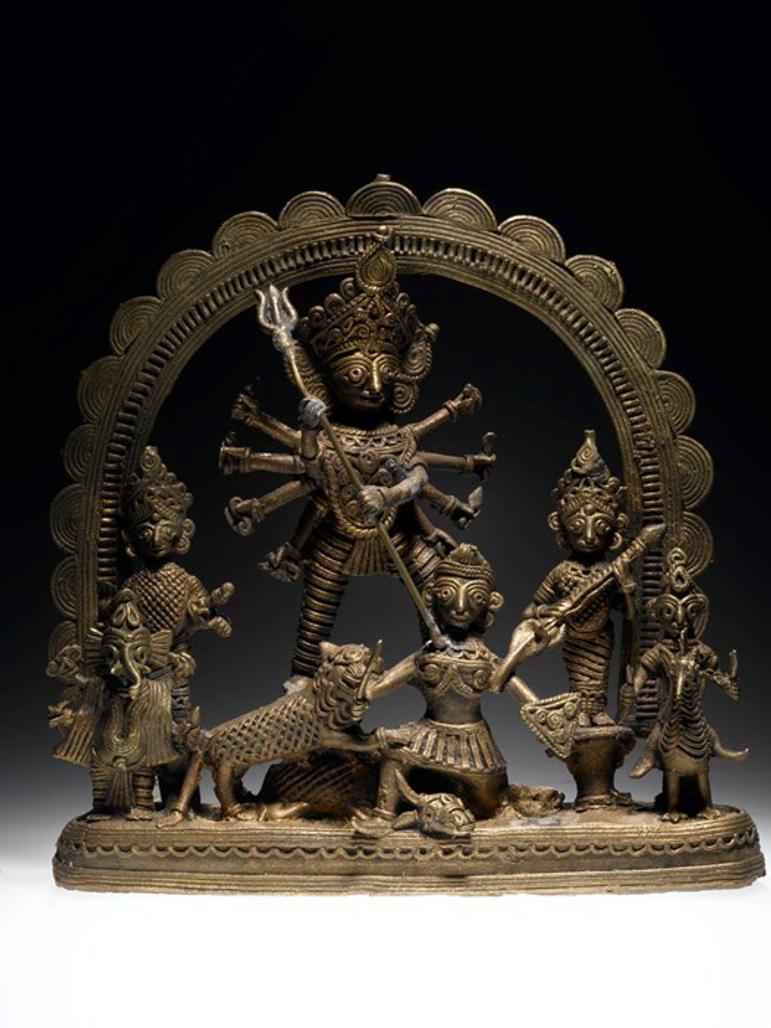
During later research the group found that the creation of metal idols dates back to around 3000 BC to the time of the Indus Valley, an ancient civilization which existed in northwest South Asia between 3300-1300 BC. Ancient Indian texts about sculptures describe this technique as a special art. Stringent rules governed the creation of the idols. A sculptor who broke these rules was regarded a great sinner. Before carving, sculptors would purify themselves ritually, as gods would only reside in a flawlessly finished statue. The eyes of a figure would be finished last. A priest would ritually incise the eye with a golden tool, or add a final element of paint. This would turn a carved stone or bronze cast into something else - ‘a divinity who returns our gaze’- and they are considered kaalateet or ‘ageless’ because they have been used from the most ancient times till today.
The group discovered that all this work had been done by craftsmen, as women have not historically been allowed to engage in this kind of work, probably due to sexist judgements about the nature of menstruation as ‘impure’.
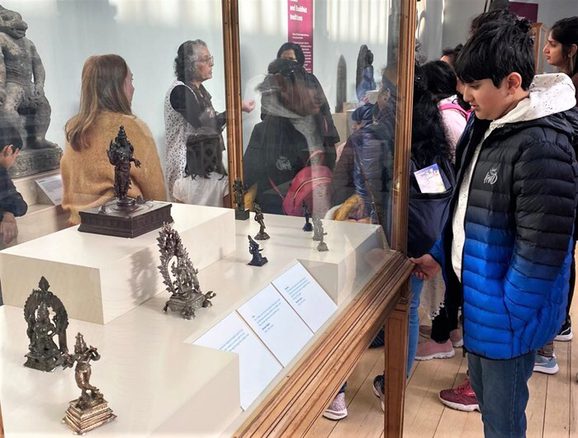

Dusshera
The festival of Dusshera is celebrated at the end of Navaratri by Hindus wherever they live.
During the festival (September/October in the Gregorian calendar) massive alluring idols of the deity Durga are carved and painted by expert sculptors showing her standing erect riding her lion, holding the long spear ready to slay the demon Mahishasura.
The sculpture of Durga can be found in the Traditions in Sculpture gallery at the National Museum of Scotland.
